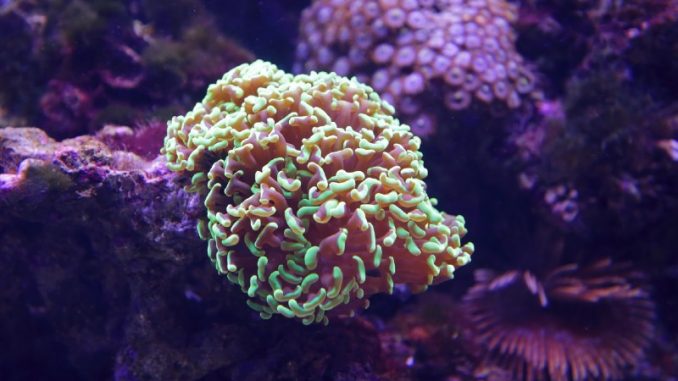
The Hammer Coral belongs to the group of corals that are commonly called LPS corals. These letters stand for large polyp stony and mean that the coral has a hard, or stony, outer surface, and produces large polyps that emerge from its stony, hard base.
This article will tell you everything that you need to know about the Hammer Coral and will provide you with a guide to keeping it in your aquarium.
Overview
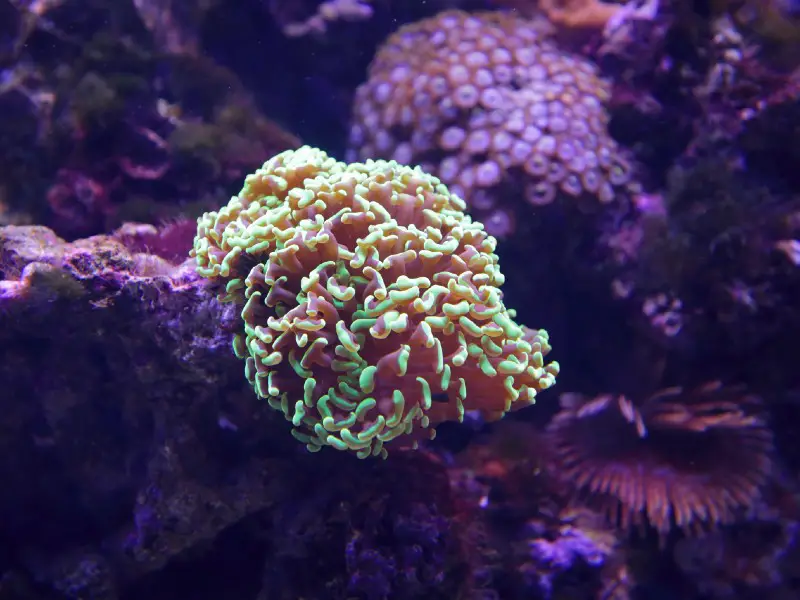
| Category | Rating |
| Care Level: | Moderate |
| Temperament: | Aggressive |
| Color Form: | Various |
| Lifespan: | Up to 75 years |
| Size: | Up to 6.5 inches |
| Diet: | Carnivore |
| Family: | Caryophylliidae |
| Minimum Tank Size: | 50 gallons |
| Tank Set-Up: | Moderate water flow |
| Compatibility: | Most marine livestock |
The Hammer Coral is also sometimes called the Anchor Coral because it has tentacles that are shaped like an anchor or a hammer. It belongs to the Caryophyllidae family of sea plants.
The Hammer Coral is an LPS, or Large Polyp Stony Coral, with a hard exterior that has a stony surface. This stony texture is the result of calcification, giving the coral a solid base structure.
The Hammer Coral has many polyps. These polyps reach out and extend from the stony base. They wave around the tank and are propelled in their movement by the direction of the water current.
The scientific name of the Hammer Coral is Euphyllia ancora. This coral was originally found in the northern parts of the Indian Ocean.
The Hammer Coral is a wonderful sea creature to have in your aquarium. Because it comes from the sea, it can only be kept in a saltwater tank. It requires only a moderate level of care, as long as its basic needs are met in terms of tank conditions.
The Hammer Coral is quite versatile and is capable of adapting to different water conditions.
If you are at an early stage of your journey as an aquarist, the Hammer Coral is a great way to start gaining experience with keeping different types of coral in your aquarium.
It will thrive in numerous different light conditions, not caring if the light is either very bright or quite dim. As long as there is enough light for the other plants in the tank to go through the process of photosynthesis, the Hammer Coral will be happy.
The Hammer Coral, like most other species of coral, has a very long life span. In ideal conditions, it can probably live for a very long time.
These corals have been known to live for 70 years or even longer. Its long lifespan makes the Hammer Coral particularly satisfying to keep in your tank. It is available from most aquatic supply stores.
When buying Hammer Coral for your tank, it is advisable to buy from a reputable store, in order to ensure that you are buying a disease-free specimen. Be prepared to pay close to $100 for a strong and healthy Hammer Coral
Typical Behavior
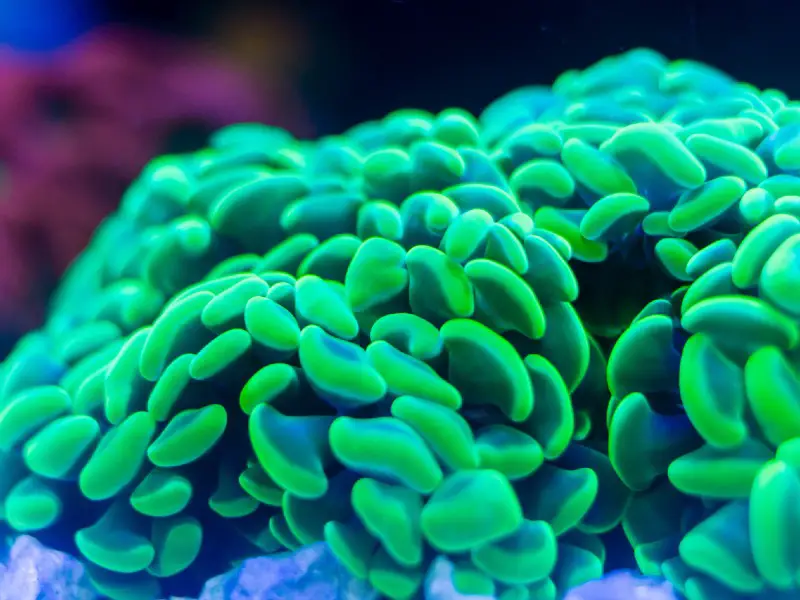
When considering the plant or animal debate, one might wonder about using the term ‘behavior’ in relation to the Hammer Coral. Even though it might technically not actually be an animal or fish, it most certainly exhibits certain typical characteristics.
While the Hammer Coral does not actually swim, and the stone base remains fixed in one spot, the polyps do move a lot, waving about as they are propelled by the flow of the water.
These polyps are highly sensitive to all of the other tank inhabitants and will react accordingly if any drastic changes occur.
The Hammer Coral has a very aggressive nature. If you have any other corals in your tank, it will be constantly competing for space, food, nutrients, and light. It will respond aggressively if it feels threatened.
It has a brutal sting, and will not hesitate to use it to defend itself if it feels as though it is under attack. Therefore, it should be given a lot of space in the tank, and it should not be positioned too close to any of its tank mates.
The Hammer Coral uses its sting to hunt and capture its prey. Because the polyps, or tentacles, move so freely around the tank, they are able to find and gather food whenever they feel the need.
Appearance
The Hammer Coral is a hard coral with a stony base. It has multiple polyps, or tentacles, that emerge and extend from the base. It is shaped like a hammer, or even an anchor, which is where it gets its two names from.
The polyps are so thick that they usually completely cover the hard base, making it difficult to see the bottom part of the coral. The polyps can be seen in all light conditions and at all times of the day or night.
The Hammer Coral varies in color. It could be different shades of light tan to darker brown or varying shades of green. The tips of the polyps often glow either gold or lime green under actinic lighting.
The ultraviolet components in actinic lighting cause a reaction in the polyps, causing them to glow brightly, almost like a little torch. For this reason, the Hammer Coral is often confused with and misidentified as a Torch Coral.
The Hammer Coral is found in many different sizes. Some of them are only 1 ½ inches long, while the bigger ones can be as big as 6-7 inches in length.
Habitat and Tank Conditions
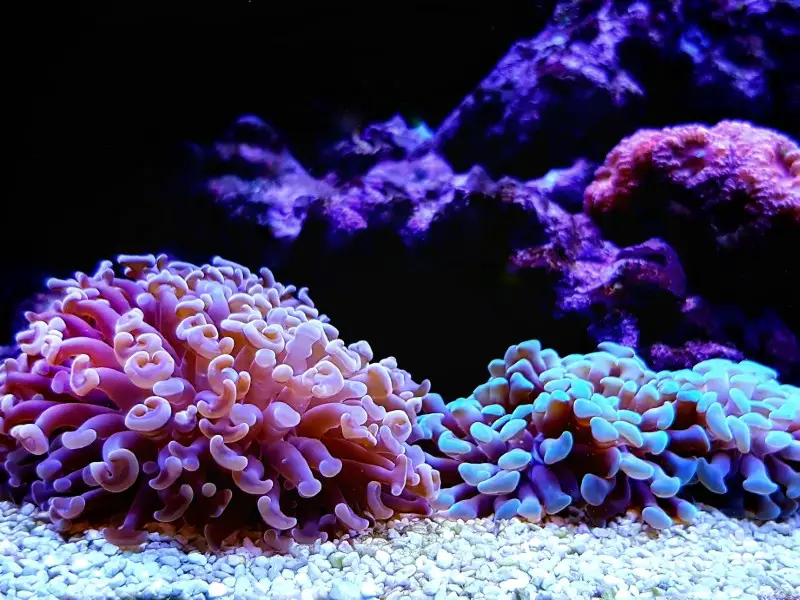
The Hammer Coral should not be positioned near the top of the tank. It needs a lot of space above the base, so that the polyps have room to move, without interfering with any of the other inhabitants of the aquarium.
If it is placed towards the bottom of the tank, it will have enough room for the polyps to wave about and not come into contact with any other plants or fish. If it does come into contact with other occupants of the tank, it will most likely attack and sting them.
When considering the tank conditions, it is important to pay attention to the pH level, the direction and strength of the water flow, the lighting, and the chemical elements in the water.
Tank Conditions
The perfect water temperature for the Hammer Coral is from 72°- 78° Fahrenheit. Any colder than this, and it will deviate too far from the conditions of its native origins.
The Hammer Coral will not do well in water that is too acidic. The perfect pH level of the water should be between 8.1 and 8.4. If it is too alkaline, it will also fail to thrive.
Because it is a ‘bony’ species, the Hammer Coral requires sufficient levels of calcium. Ideally, the calcium level in the aquarium water should be maintained at 400 ppm.
The direction and flow of the water current in the tank will have an effect on your Hammer Coral. A moderate water flow will ensure that the polyps of the Hammer Coral are able to wave about gently, without any disturbance.
Moderately dim lighting will help the Hammer Coral to grow. For this reason, it is recommended to place it lower down in the tank, away from very bright light that may cause the polyps to curl inwards.
What Size Aquarium Does It Need?
Because of the aggressive nature of the Hammer Coral, it is advisable to give it a lot of surrounding space in the tank. If the polyps are within touching distance of any other inhabitants in the tank, they will use their sting the moment they come into contact with anything else.
A 50-gallon tank should be big enough to give the Hammer Coral the space that it needs.
Tank Mates
The Hammer Coral may seem harmless, but it can and will sting and harm any creature that comes too close.
Most reef-safe saltwater fish that are not likely to attempt to eat the Hammer Coral would be suitable tank mates.
One should avoid placing any other varieties of coral in the same tank as the Hammer Coral. It will see these as a threat, and use its sting to defend itself against them. However, it will not attack another Hammer Coral.
Diet
Because it is carnivorous, the Hammer Coral will eat small pieces of fish and meat. Mysis shrimp is a good choice, and the small pieces can be pushed down into the polyps so that they don’t land up getting eaten by the other fish in your tank.
However, the Hammer Coral is also able to find its own food. It feeds off the fish waste and other bits of food that it finds in the tank.
Zooxanthellae, which are organisms that hide within and amongst the polyps of the Hammer Coral, produce food through photosynthesis. The Hammer Coral will also eat the food produced by the photosynthetic organisms with which it shares its tank. Therefore it only needs to be fed meat about once a week.
Even though the Hammer Coral is able to find its own food, feeding it a weekly dose of microplankton will also help to stimulate and maintain healthy growth.
Care
The Hammer Coral is fairly easy to maintain, requiring only a moderate amount of attention from you. Its needs are fairly simple, and it will thrive as long as the tank size, water parameters, and lighting are suitable for its needs.
The most demanding aspect of caring for the Hammer Coral is probably keeping the tank clean. It should be cleaned regularly, in order to ensure that there is no build-up of algae and other harmful organisms that can grow and multiply in an aquarium.
Mineral levels in the tank are also important. The Hammer Coral needs a steady supply of elements such as calcium, magnesium, strontium, and trace elements.
It is helpful to use a test kit every now and again, to establish the levels of the minerals in the tank. Test kits are available from aquarium supply stores.
Propagating Hammer Coral
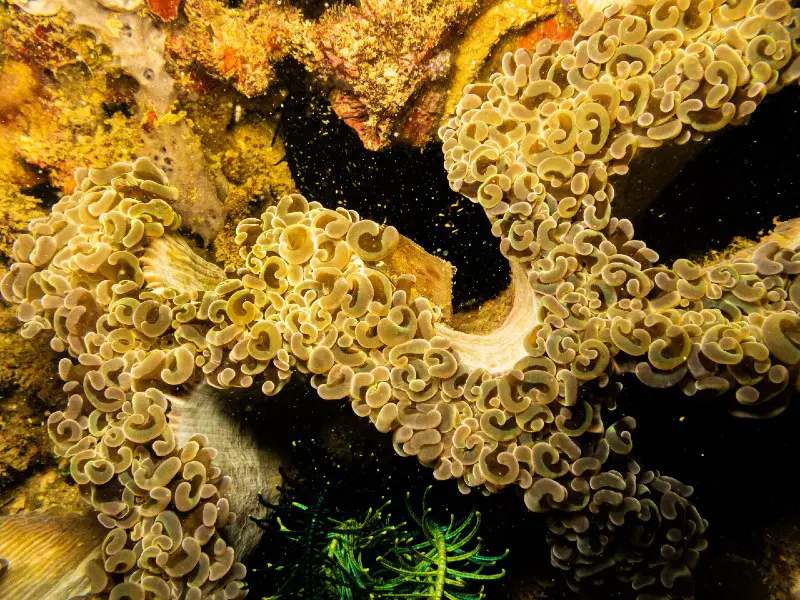
Fragging, or propagating, the Hammer Coral is fairly easy. It frequently propagates on its own. New Hammer Corals grow from fragments that break off and start growing into healthy new coral. Hence the term fragging.
It is also possible to propagate the Hammer Coral by removing a piece, using a sharp pair of shears. If this piece is securely attached to a new surface, either with glue or by being tied securely, it will start to grow and eventually, a new Hammer Coral will develop.
Are Hammer Corals Suitable For Your Aquarium?
As long as your aquarium can provide the Hammer Coral with all its needs, as described above, there is no reason why you should not keep it in your tank. It will make a beautiful addition to your saltwater aquarium.

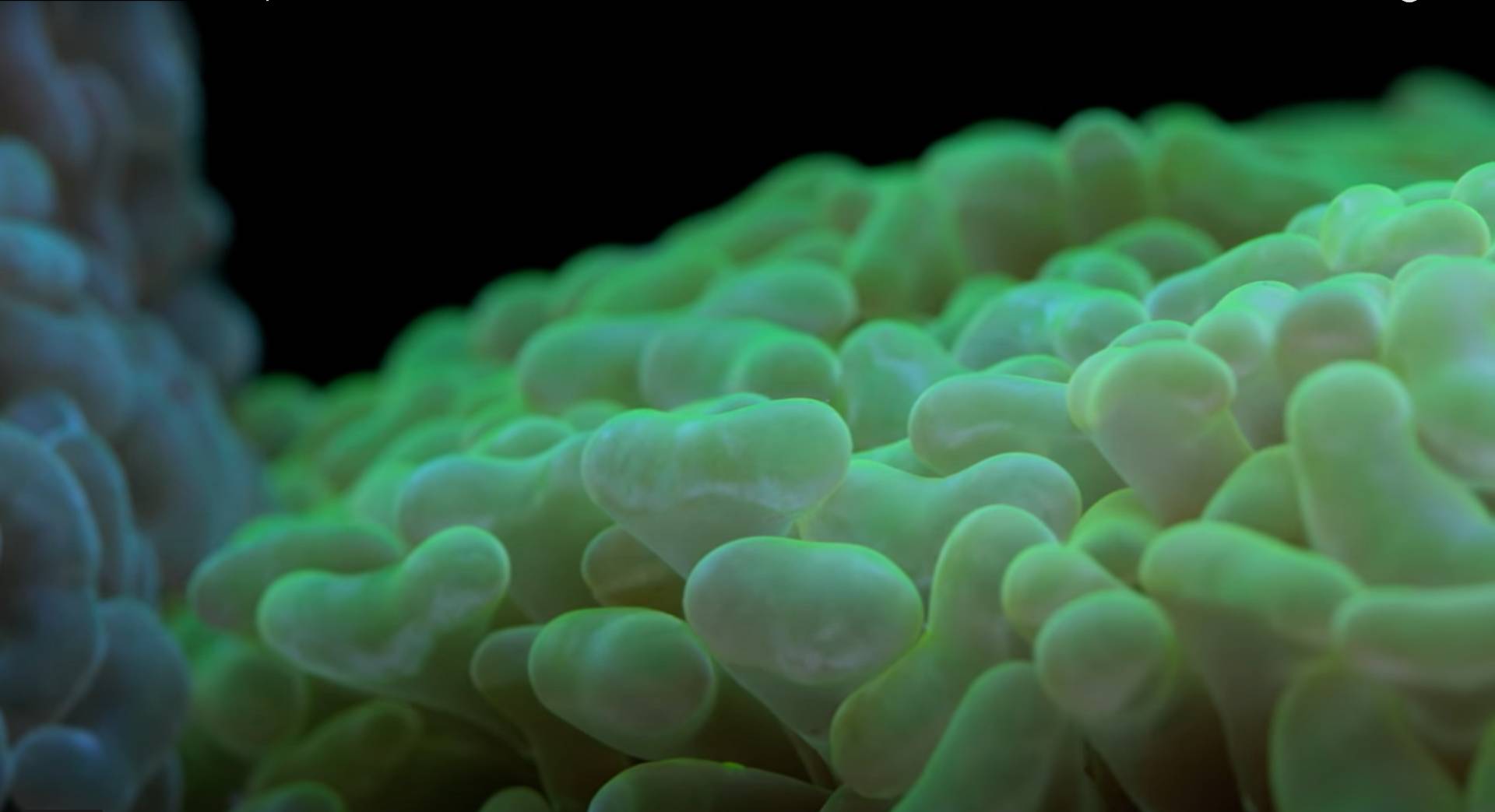
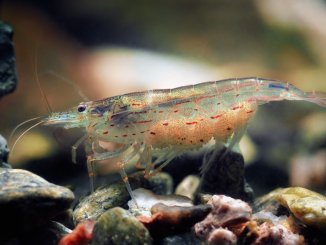
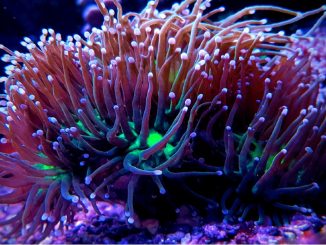
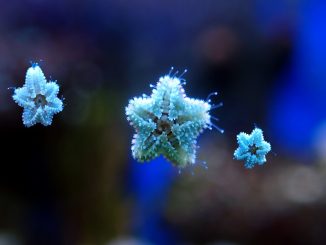
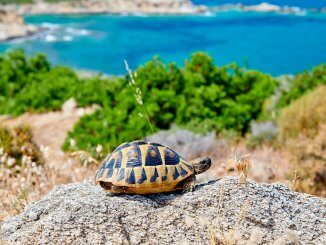
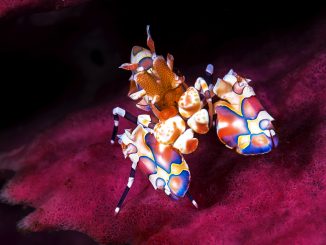
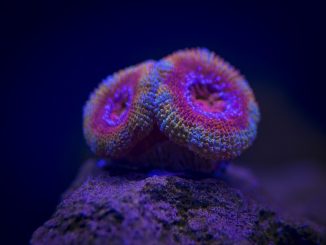

Be the first to comment